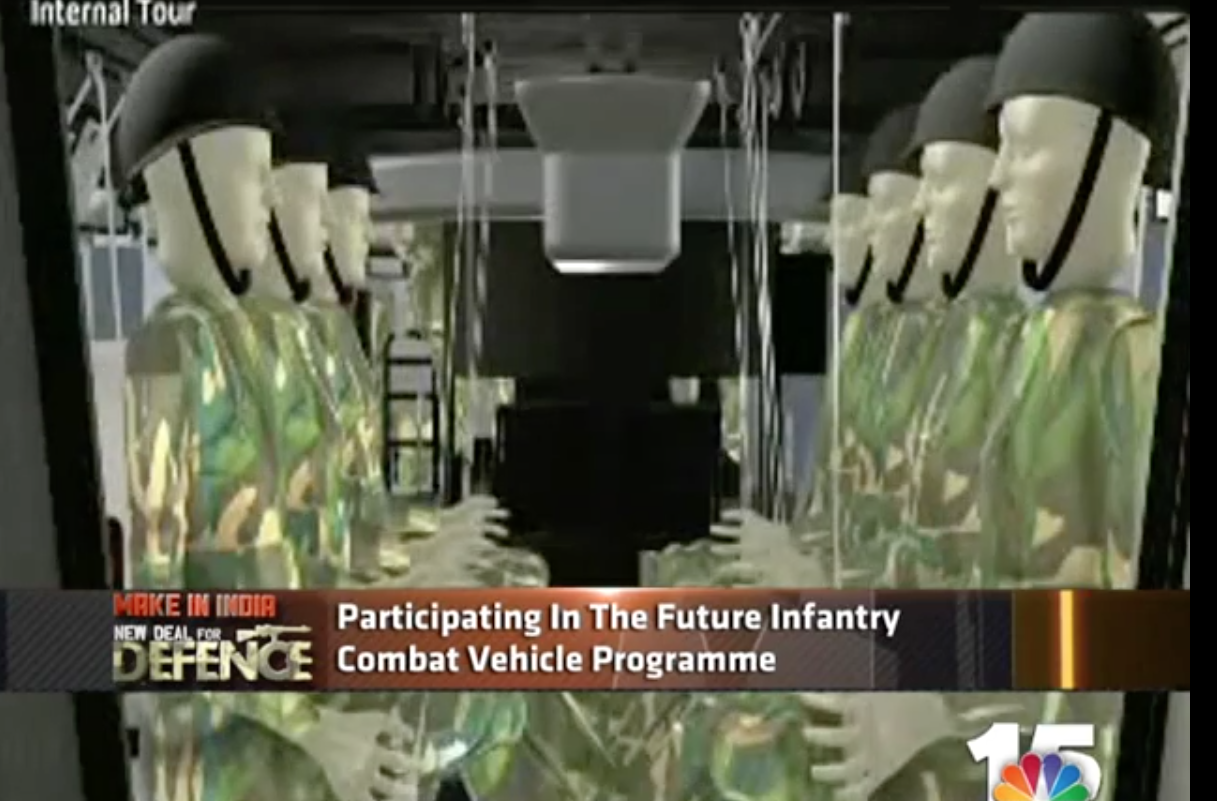Friday, 17 July 2015
 By Ajai Shukla
By Ajai Shukla
Business Standard, 17th July 15
After five years of delay, the army’s proposal to build a “Future Infantry Combat Vehicle” (FICV), an armoured vehicle for carrying infantrymen into battle, has been resuscitated on Thursday.
The ministry of defence summoned representatives from 10 Indian companies and handed each an “expression of interest” (EoI), which asks for proposals for building a FICV that will eventually replace the army’s 2,600 BMP-2 infantry carriers for an estimated Rs 50,000 crore.
The EoIs were issued to Mahindra; Bharat Forge; Larsen & Toubro; Punj Lloyd; Tata Power; Tata Motors; Pipavav Defence; Rolta India; Titagarh Wagons, and the Ordnance Factory Board (OFB).
They have been given 90 days to respond to the EoI with detailed proposals. This will involve forming consortia with Indian and foreign vendors, and conceiving and proposing the design of an FICV that would best suit the army’s requirements.
Two vendors will be shortlisted, and they will then evolve and submit a detailed project report (DPR), comprising of a detailed technical and financial proposal. The better design will be chosen by an “integrated project management team” (IPMT), comprising of experts from various defence ministry departments.
This is the second time the FICV project has been launched under the “Make” category of the Defence Procurement Procedure of 2008 (DPP-2008). An EoI issued in 2010 to four vendors (L&T, Tata, Mahindra, OFB) evoked responses, but was cancelled in 2012 because the defence ministry could not decide on the parameters for short-listing the two winning vendors.
With the ministry taking three years to re-issue the EoI, the FICV project has lost five years already.
The “Make” category involves going to Indian industry to develop “high technology, complex systems”. Under this, the defence ministry will funds 80 per cent of the cost of developing the two FICV prototypes, with short-listed vendors paying the remaining 20 per cent.
There is apprehension that issuing the EoI to so many prospective vendors has muddied the waters, making it difficult for the IPMT to down-select two winning proposals. “In 2012, the defence ministry was unable to select two winning proposals out of four. It will have an even more difficult time selecting the winners from 10. They should have been more discriminating in issuing the EoI”, says an executive from one of the companies involved.
There is surprise also that the EoI has been issued under the DPP-2008, even though DPP-2013 currently operates and DPP-2015 is being finalised. “The army obtained the ministry’s acceptance under DPP-2008, so they are sticking with that, even though there are much more enlightened rules operating now. This needs to change”, says a prospective vendor.
The FICV has been conceived as a multi-role platform that must perform three roles. It must be a battle-taxi for the infantry to keep pace with armour (tanks) in advance. Second, the guns on board provide fire-support to assaulting infantry after they dismount and charge at the enemy. Third, and most ambitiously, the FICV should hold its own on the mechanised battlefield, even against heavily armed tanks.
The FICV is required to have amphibious capability, allowing it to cross canals, rivers and stretches of sea; it must be air portable, i.e. capable of being transported in an aircraft’s cargo hold, or slung under a helicopter with chains. It must fire anti-tank missiles, and be armed with a cannon and machine guns that are operated through state of the art sensors and all weather surveillance devices.”
















